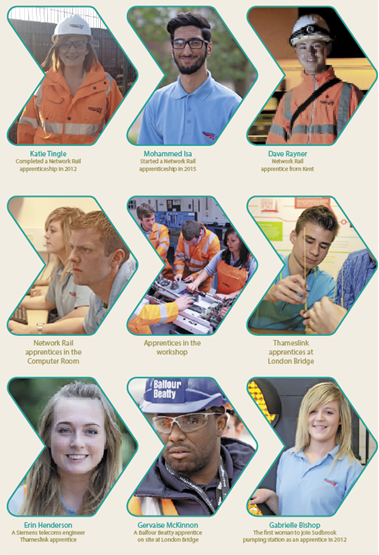 It will be news to nobody that there is a skills shortage in the rail industry. This well-trodden ground has been the subject of many a conference speech and magazine article over the past few years.
It will be news to nobody that there is a skills shortage in the rail industry. This well-trodden ground has been the subject of many a conference speech and magazine article over the past few years.
But there comes a point when admitting we have a problem and quantifying the size of it can only get us so far. Continued investment in the railway will only be worthwhile if we take action now to ensure that the workforce and expertise is put in place to deliver on our ambitions.
We’re suffering from the legacy of past underinvestment in transport and its workforce, preventing skills from being handed down to the next generation and stifling the flow of new and young people onto the railway.
In more recent years, rail has enjoyed significant Government investment, but will this continue?
National Skills Academy for Rail Chief Executive Neil Robertson warns that our skills shortage could create a vicious circle here: “The Treasury is very reluctant to invest in rail because they think we are overheated. They think we have skills shortages and wage inflation. I’ve been saying this for six months, and I think the Autumn Statement and recent Budget proves it.
“So there is a really, really important job for rail to do, which is to acknowledge the problem and then do two things: firstly, tell a very convincing story about what we’re doing on skills to make things better, which is primarily training lots of apprentices; and secondly, how we are working together as an industry to smooth peaks and troughs in demand to give companies a longer-term view, so they are incentivised to invest in people and innovation.”
Rail has a higher wage inflation than any other sector - a fact that Robertson says the Treasury is well aware of. But why is this more prevalent in our industry?
“Three reasons: shortage of people; unions (getting above inflation pay increases); and a good thing (which makes us look bad in the figures) is what the economists call the concentration effect - we’re already starting to see a move higher up the skill levels. There are fewer of the Level 2 jobs and more of the Level 3/4 highly-skilled jobs , so those people are naturally more expensive. We’re moving up the value chain, which in many ways is a good thing, but it looks bad in the figures.”
In the railway’s favour is that we have the best data on skills of any sector at the moment. And there is significant evidence that people in rail are not only keen to act on this, they are actually getting on with it. There is goodwill towards solving the skills shortage, which is half the battle.
Robertson explains: “We’ve got the bit between our teeth and, to mix metaphors, our husky dog sledge is starting to move. But it needs to move further and faster. We’re doing the right things, but we’ve got to do more of them and more quickly. So get on with it, because telling a good story and showing some early green shoots will only take us so far. The Treasury will only believe it when they see it in the figures. So, by the end of 2017, we need to have lots of new people signed up on apprenticeships.”
Essentially, the only thing rail can do to improve the story to the Treasury is to take on more apprentices - they earn less, bring the average wage down, and reduce the wage inflation caused by skills shortages (which is probably about a third of the inflation issue). Our relationship with the unions also plays a big part in this.
The Government is taking its own action to resolve some of these issues, and Robertson is optimistic about this involvement: “It’s unusual because the Government is really getting alongside industry and really getting involved in terms of skills. I can’t fault it, and I’m a man that says when it’s good and when it’s terrible!”
The biggest change this year is the introduction of the Apprenticeship Levy (see panel, page 73), which begins at the start of the new financial year in April. For many big companies this brings huge costs, but one of the main areas on which NSAR is currently focusing is providing advice and assistance to show businesses how they can optimise their levy and achieve the best return from it.
In many ways rail is leading in this area - NSAR’s bespoke levy planner has already been bought by other industries. The aim is to help businesses understand how much of the levy they can get back and how to create a high-level plan for using it.
However, encouraging businesses to invest in skills is easier said than done in an environment where there is a lack of clarity and certainty over future demand and investment in rail. Resolving the skills shortages in the industry cannot just be about what individual companies can do to help - there is an onus on Government to play its part more effectively.
In a report released in February (Staying on Track), Balfour Beatty claimed that the lack of an industrial policy for the railways will drive skilled engineers into other sectors, and that this is preventing the supply chain from investing in technology that would increase productivity, because of the uncertainty about future available work.











